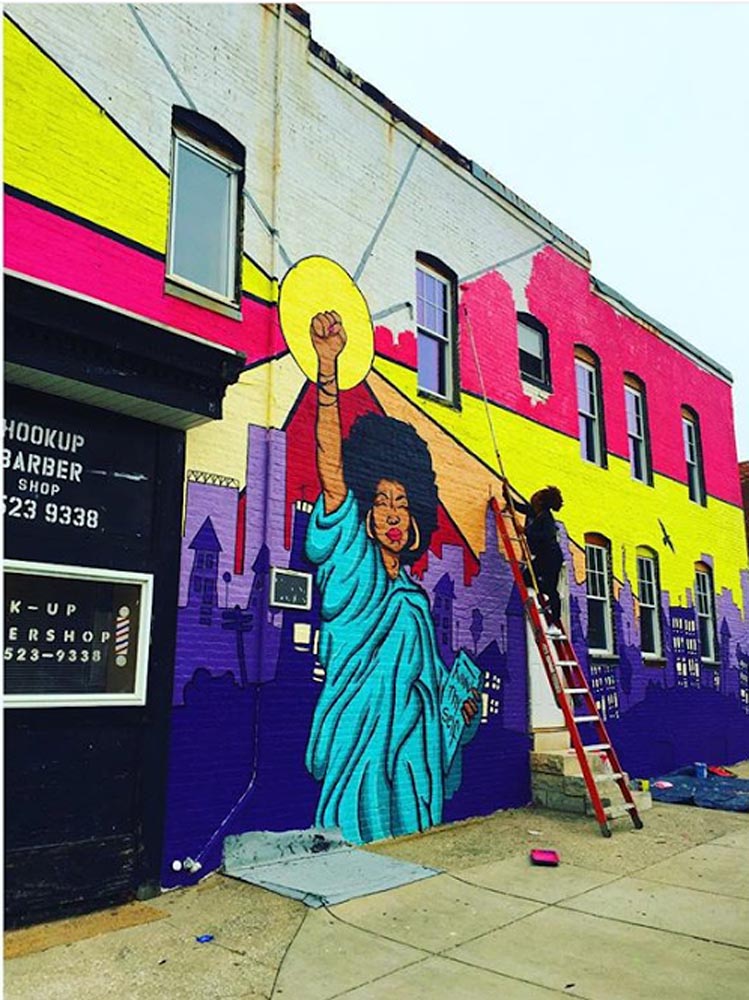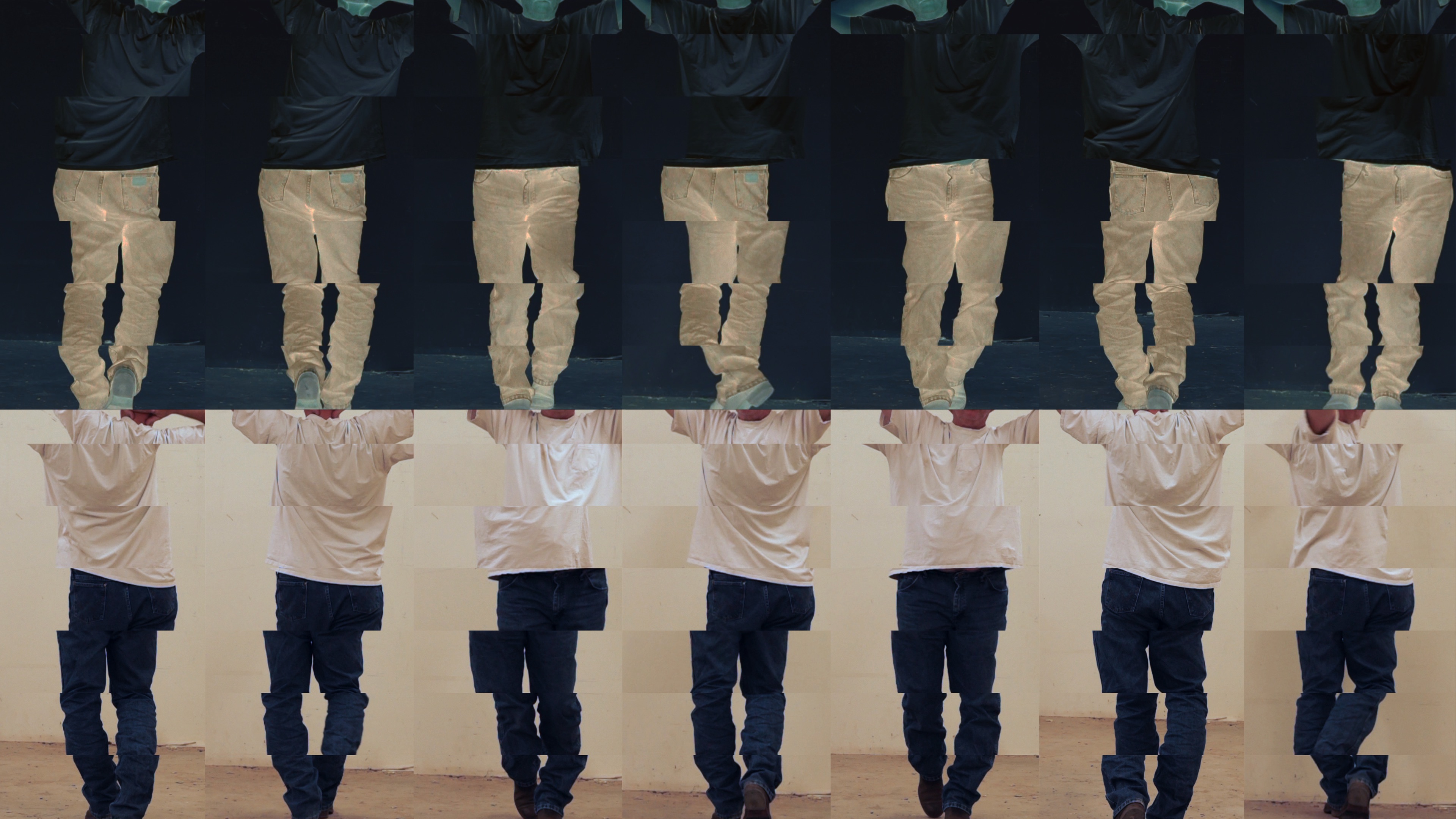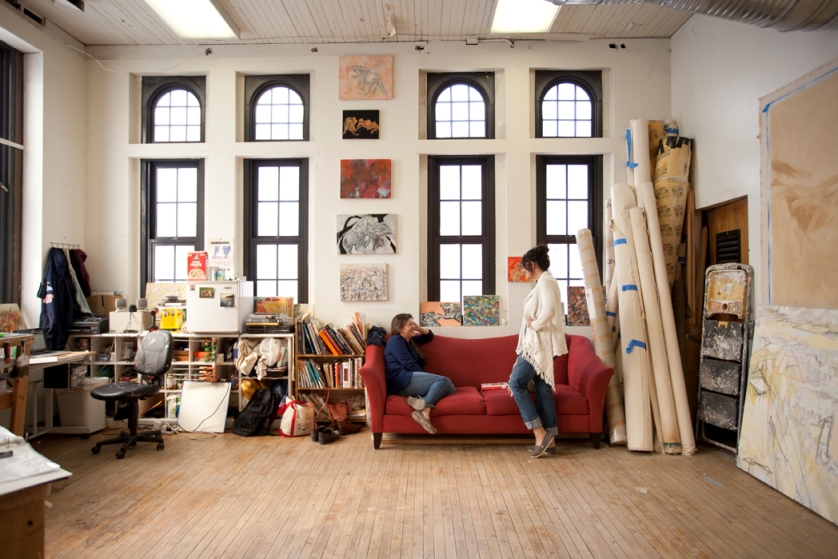Advice for Artists and Visitors for the annual School 33 Open Studio Tour
by Cara Ober
Although an art gallery is still, arguably, the best place to experience an artist’s finished work, there’s something quite special about visiting their studio.
The artist’s studio is a sacred place, where you can gain an unfiltered sense of who they are, how they work, and how they form their ideas. Seeing an artist’s workspace, their tools, even their weird tchotchkes and inspirational images, helps a visitor to form an intimate connection to the work and the artist in a way that a formal gallery show does not.
Unlike most urban arts centers, one of Baltimore’s selling point for artists is a variety of large and affordable studio spaces, where even young artists can think ambitiously and not be forced to compromise their ideas and scale. Some studios are slick and showy, others resemble the best of Hoarders, and some are cozy communities where you can sense that artists support one another.
For artists who want to check out other artists’ work, for artists in the market for a studio space, and for curious creative types who want to browse, converse, and possibly buy, Baltimore’s annual School 33 Open Studio Tour is the perfect opportunity.
How it works: Participating artists register and pay a small fee for inclusion, a map (link here to the 2016 Open Studio Tour Map) is created of all participating studios and hours for the tour, and then (this year) from Saturday, October 8 and Sunday, October 9, anyone can pop in for a visit between 10-6 pm.
This is a great way for artists to build an audience for their work, especially for emerging artists. It’s also a great way for collectors to purchase affordable works of art.
In the late 90’s and early 2000’s, I shared a warehouse studio in Station North, and we participated in this event year after year. I had several studio mates and we always put out a spread of food and drinks, invited lots of friends and family, and had a great time. Years later, I still meet other artists and curators who remember seeing my work the first time in my studio, in an open studio tour.
Of course, when public and private worlds collide, there’s always the potential for awkwardness and misunderstanding. So – based on my own experiences as an artist and a visitor, I have compiled a list of strategies to keep your day upbeat and productive, with a minimum of faux passes.

Open Studio Etiquette for Artists
1. Clean. You don’t have to make it look like an art gallery, but that pile of garbage moldering in the corner? Get rid of it. You don’t have to put your art supplies away, but that palette covered in oil paint and solvent? Put it in the closet. Anything that might stain clothing that you could be liable for should go away.
2. Curate your space. This can be tricky because, unlike other types of studio visits, you have no idea who is going to show up. An open studio is a public event and your audience will be diverse, varied, and unexpected. Although it depends who you are and what kind of work you make, it’s a good idea to offer more than one body of work to appeal to a variety of visitors. If possible, hang work in the order you’d like it to be experienced – have a sense of chronology in your mind.
A general rule is to include three separate bodies of work that fall into three different price points: an expensive series, a medium one, and an affordable one, like prints, multiples, T’s, or zines. This gives a visitor the sense that you’re an accomplished artist with a variety of projects without seeming scattered or all over the place. It also creates options for curators who might want to show your work in galleries or museums and for young collectors who love what you do and can only afford to buy a ‘starter’ piece for now.
3. Lighting. If it’s too dark, no one can see it. Take your spotlights, clamp lamps, and whatever other lighting you have and arrange it for the most even lighting you can provide on the work. Being able to hang and light your work in the best way possible is essential.
4. Pacing. Do you want people to linger? Seating is a good idea. Providing some sort of drink or food will encourage people to hang out in your space. In addition, having smaller works to thumb through in bins or on tables encourages people to take their time.
5. Sales. Do you want people to purchase your work? Then you need to know how much your work costs. There’s nothing worse then asking an artist ‘How much?’ and having them stare blankly at you and mumble, I don’t know. You have to know the prices of your work and be able to relay them confidently if you want anything to sell. I suggest creating a price list on a separate sheet of paper and tacking it to the wall, or printing a stack for takeaway with your contact information on it. Also having a mobile card reader to facilitate credit card purchases is a must.
If you’re interested in conversation, but not sales – that’s fine too. It’s not a bad idea to type that up and tack it to your wall as well. Something like, “Work not for sale. Contact the artist at Xemail or Xphone# for sales information,” so people aren’t confused and can follow up.
6. Takeaway materials. Postcards, stickers, affordable or free stuff with your info is great. Something with an image is ideal, but well designed business cards work perfectly too. Your online footprint has the potential to grow, so make sure you make your twitter or instagram handles or hashtags visible, so your visitors can share your work with their networks.
7. The Elevator Speech. Take a cue from political debates – it doesn’t matter if you answer the question asked, just that you present a confident and clear response. Visitors will all say the same basic thing: “Tell me about your work.” Be prepared to answer this question. Have a short answer and a long answer.
Sometimes it’s great to answer with a question, to get a sense of what the asker sees in your work and what they want to know more about. Practice in front of the mirror or take a video of yourself explaining your work. No elevator is necessary.
8. MOST IMPORTANT THING YOU CAN DO: Your Mailing List is GOLDEN. Artists need to think about this open studio experience as one of many in a very long career, as a very small piece of a longterm process. The open studio tour is the perfect way to build your mailing list.
Put out a signup sheet for people to include email, or home address if you’re hardcore and want to mail postcards. Then, the next time you have an exhibit, you can follow up with those who are interested in your work. This mailing list will grow with each show and each project and will serve as the basis for your future exhibits, sales, and opportunities.
Open Studio Tour Etiquette for Visitors
1. Know Your Purpose. Are you coming to purchase or coming to browse? Either one is fine, but it is good to be clear. Artists are happy to talk to you about their work and are thrilled if you purchase it, but mixed signals are not helpful. Be clear about your purpose with the artists you visit, if it comes up. If you are there because you are looking for a studio, put that out there as well. Many studio visitors ask about cost of rent, how artists got their space, and if a studio is available.
2. Ask questions. Artists LOVE to talk about themselves – and their work. And their friends and families are sick of hearing about it. Trust me, you won’t look dumb. They will bask in the glow of your interest and their genius. This is a must.
3. The Food. Snacking is fine, but grazing? No. Don’t eat all the food and don’t drink all the wine. Just remember — the artists had to PAY to be part of the tour, and have paid for the food. Just be polite. This is a studio – not a smorgasbord.
4. How to Answer the Dreaded Question, “So what do you think of my work?” An artist inexperienced enough to ask this question has one expectation – they want you to tell them you love their work and that they are a genius. If you don’t think you can say that, just say, “I’m interested and I want to know more.” This puts the ownus back on the artist. Don’t worry about fancy artspeak or offering MFA level critique – this is not the place for this and no one expects you to bust out with quotes from Bertold Brecht.
5. Cards, publications, pamphlets: If an artist offers you their schwag, and if you are not seriously interested in it, you’re not doing them a favor by accepting these, only to throw them away later. Most likely, the artist paid to have these made. If you are interested, take away literature. If not, politely decline, saying “Thank you, but I want to make sure there are enough for everybody.”
6. The Art Purchase: What if I DO want to buy something? How to make a purchase without paying too much?? Some artists are professionals on this, and are clear on the market value of their work. Some artists will have prices listed next to their work. Others have NO IDEA. Small works on paper can go anywhere from $50 to $2000. Larger paintings on canvas can go for more and sometimes less.
I suggest doing your homework first. Artist’s websites are listed on the School 33 site and Studio Tour Map. Check out the work beforehand if possible. If you fall in love with something on the spot and have to have it, that is GREAT!
Ask the artist for their price. If it seems too high (and you have done your homework ) tell them you LOVE the work and then ask ONE TIME and no more, if there is any wiggle room on the price. Don’t expect the price to go down lower than 20% off of the original, though, and asking repeatedly is insulting.
Conclusions:
Visiting an artist’s studio can be a magical experience. It’s completely different than seeing their work in a show. It’s informal, it’s intimate, and gives you clues and insight into their process that would never be present in a gallery. An open studio tour is a unique and intimate opportunity to make new friends, to find great art to follow and support, and to sample some of Baltimore’s most interesting industrial interiors, now in use for creative experiments.
I hope you take advantage of this great opportunity this weekend!
****
Author Cara Ober is Founding Editor at BmoreArt






